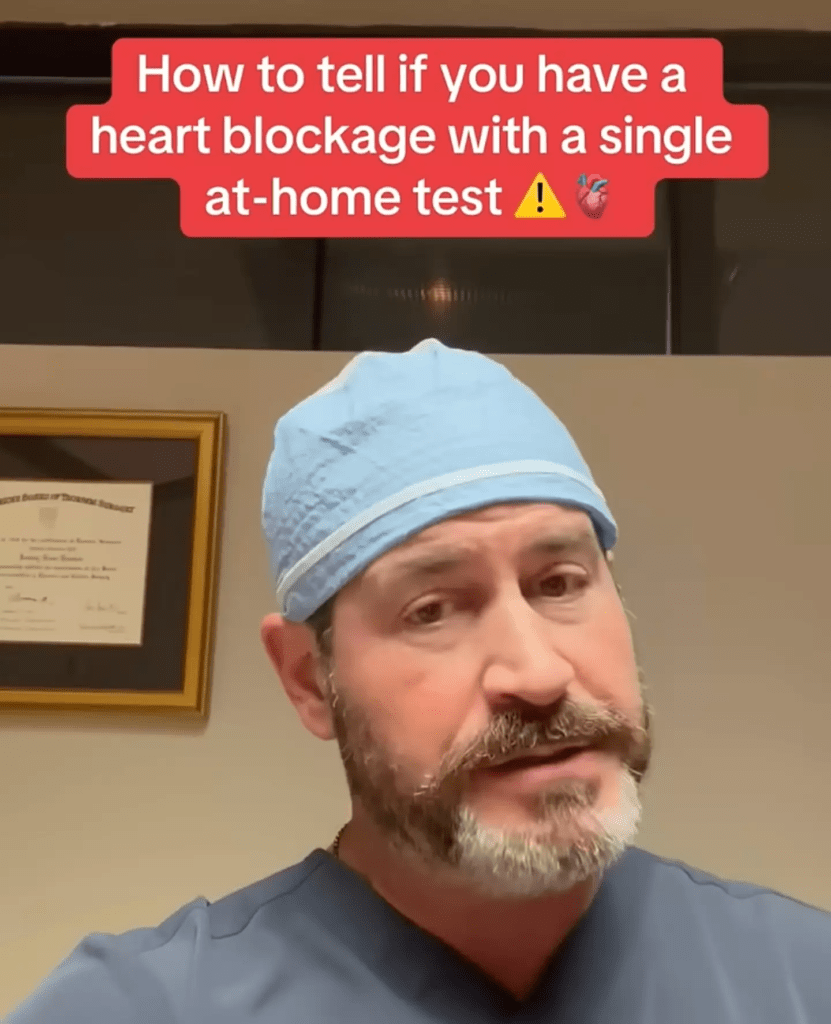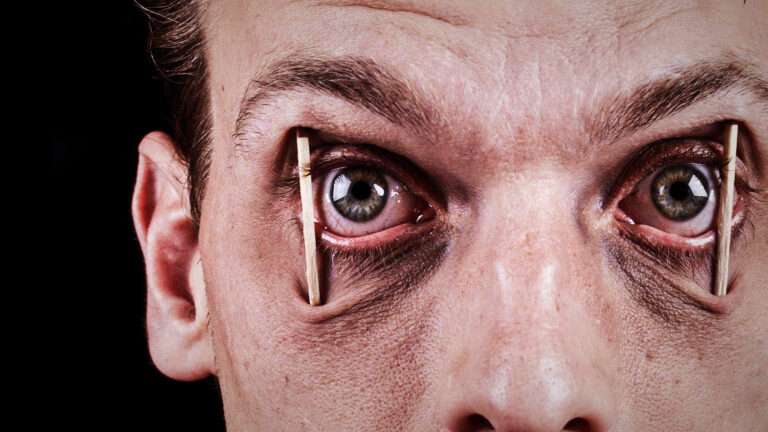Simple At-Home Test Reveals Whether You Have a Heart Blockage, Says Surgeon

Heart disease remains one of the leading causes of death worldwide, but did you know that there’s a simple way to check for potential heart blockages right from the comfort of your home? Dr. Jeremy London, a seasoned heart surgeon with over 25 years of experience, has shared a straightforward method to help you monitor your heart health without needing complex tests or medical procedures.
A Heart Health Check Without the Hassle of Blood Tests or X-Rays
For most people, checking heart health typically involves a visit to the doctor for blood tests, X-rays, or an electrocardiogram (ECG). These tests can be costly, time-consuming, and sometimes uncomfortable. However, according to Dr. London, these invasive methods aren’t always necessary to get a sense of how well your heart is functioning. Instead, he offers a simple and non-invasive method that can provide valuable insights into your heart health from the comfort of your home. His approach is ideal for those who might not have immediate access to healthcare or are simply looking to monitor their heart more regularly in between medical check-ups.
The beauty of Dr. London’s method is that it’s quick, easy, and doesn’t require any special tools or equipment. You don’t need to wait for an appointment or go through the hassle of expensive tests. By paying attention to subtle changes in your body, such as chest tightness, shortness of breath, or pain during physical exertion, you can get an early sense of whether something might be wrong with your heart. This proactive approach allows you to address potential heart issues sooner rather than later.
However, while this method is a great first step, it’s essential to remember that it doesn’t replace professional medical tests. If you notice any concerning symptoms, Dr. London advises consulting a healthcare professional for further evaluation and testing to confirm your heart’s health.

How to Tell If You Have a Heart Blockage
Dr. London’s method relies on paying attention to specific warning signs your body may give you. He emphasized that your body can often provide crucial clues about heart health that shouldn’t be ignored. Here’s what to look out for:
- Chest Tightness or Pain
Feeling tightness or pain in your chest, especially during physical exertion, is one of the key signs Dr. London highlighted. This could indicate that the heart’s arteries aren’t receiving adequate blood flow. - Shortness of Breath
Difficulty breathing, particularly when performing physical activities, may also signal a problem. The heart is struggling to deliver enough oxygenated blood to your muscles, causing you to feel winded. - Pain Radiating to the Jaw or Arm
Pain that radiates to your arm or jaw—especially during exertion and relieved by rest—could indicate that there is a blockage in one of your heart’s arteries.
Understanding the Signs: Why Are These Symptoms Important?
So why do these symptoms suggest there may be a blockage in the heart? Dr. London explained the science behind it. Imagine you have a blockage in one of the arteries that supplies blood to the front of your heart. When you exert yourself, the demand for blood increases, but the area below the blockage is unable to get the necessary blood flow. As a result, you experience chest pain, shortness of breath, or discomfort.
Interestingly, when you stop exerting yourself and rest, the demand on your heart decreases, and the pain or discomfort subsides. This is a common experience for people with angina, a condition that typically involves chest pain or discomfort due to reduced blood flow to the heart.
Angina is often a warning sign that you might be at risk for more serious heart conditions, like a heart attack or stroke. According to the NHS, while angina itself isn’t typically life-threatening, it should still be taken seriously.
The Role of Coronary Heart Disease (CHD)
Dr. London also pointed out that these symptoms may be associated with coronary heart disease (CHD), a condition caused by a buildup of fatty deposits (atheroma or plaque) inside the coronary arteries. This accumulation narrows the arteries, preventing enough oxygen-rich blood from reaching the heart muscle.
The British Heart Foundation explains that, over time, this narrowing can lead to chest pain, shortness of breath, or more severe heart problems. Many individuals with blocked arteries are unaware of their condition until they experience symptoms like angina or even a heart attack.
What Should You Do If You Experience These Symptoms?
While Dr. London’s at-home test can help you identify potential signs of heart blockages, it’s crucial to remember that not all heart problems are visible through self-diagnosis. If you’ve experienced any of the red flags Dr. London mentioned—such as chest tightness, pain radiating to your arm or jaw, or shortness of breath—it’s important to consult a healthcare professional as soon as possible.

When to See Your Doctor
If you suspect you might have a heart blockage or have been experiencing any of the aforementioned symptoms, scheduling a check-up with your doctor is the best course of action. A healthcare provider can run diagnostic tests like an ECG, stress test, or angiogram to determine the extent of any blockages and recommend the appropriate treatment.
Take Action Early: Heart Health Is Crucial
The earlier heart issues are detected, the easier it is to manage and treat them. Dr. London emphasized the importance of listening to your body and seeking medical advice when you notice warning signs. Taking proactive steps to monitor your heart health can prevent more serious conditions from developing down the line.
Social Media Buzz: What Are People Saying About Dr. London’s Heart Test?
Social media platforms are buzzing with reactions to Dr. London’s simple heart test. Here’s a glimpse into what people are saying:
- Twitter:
@HeartHealthNow shared:
“Just tried Dr. London’s heart blockage test and wow, I’ve never thought to pay attention to chest pain like this before. It’s time to listen to our bodies more. #HeartHealth” - Instagram:
@HealthyHeartToday posted:
“Heart health matters more than ever. Dr. Jeremy London’s method for checking heart blockages at home is a game-changer! Stay safe and keep an eye on your ticker. 💓 #HeartHealth #AtHomeTest” The post has received over 12,000 likes and sparked many followers to share their heart health stories. - TikTok:
@CardioCare posted a viral video:
“Did you know you can check for heart blockages at home? Dr. London’s method might just save your life. #HeartHealthAwareness” This TikTok has amassed over 100K views, encouraging people to be more mindful of their heart health.
Conclusion: Listen to Your Body and Act Early
Heart health is something we should all take seriously, and Dr. London’s simple at-home test offers a valuable opportunity to check for early signs of heart blockages. If you notice any symptoms like chest tightness, shortness of breath, or pain radiating to your arm or jaw, don’t hesitate to seek professional advice. Early detection is key to preventing more serious heart conditions.
Take Dr. London’s advice to heart—listen to your body, stay aware of the warning signs, and consult your healthcare provider if necessary. With a little vigilance, you can take important steps toward maintaining your heart health.
What do you think about Dr. London’s method for checking heart blockages? Have you noticed any of the symptoms mentioned? Let us know in the comments below!
Featured Image Credit: YouTube/drjeremylondon/Getty Stock Photo






